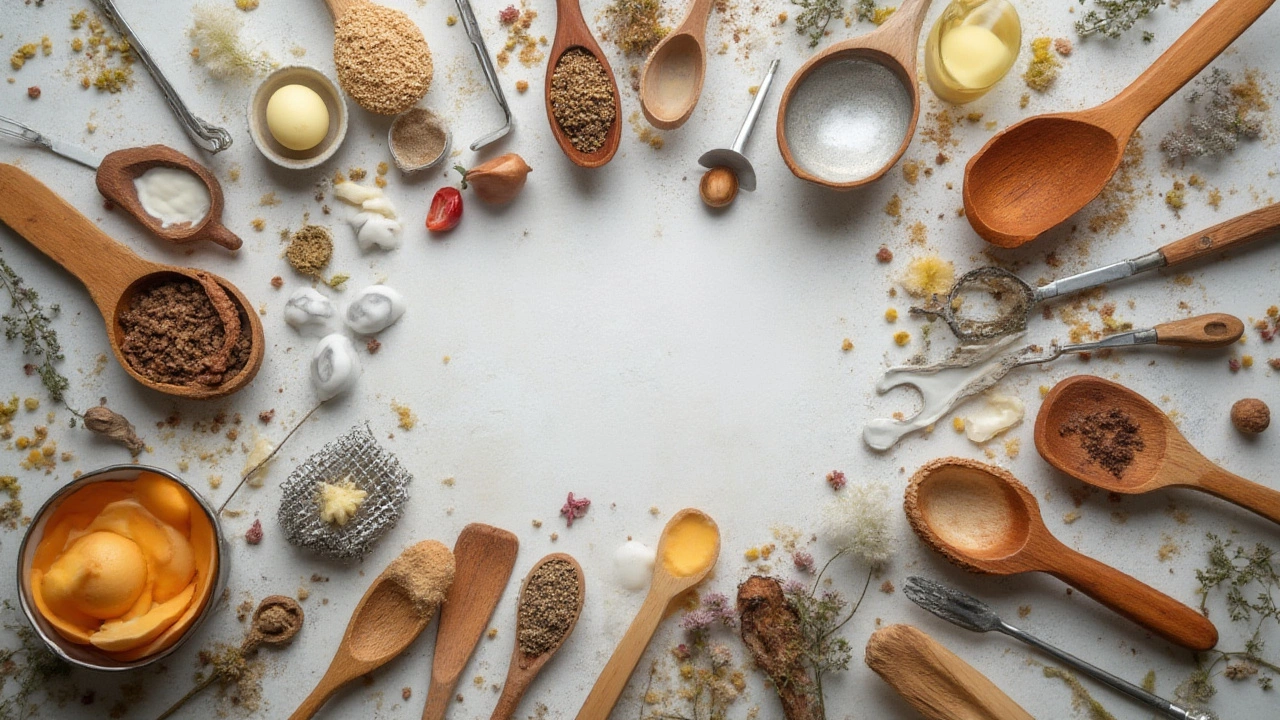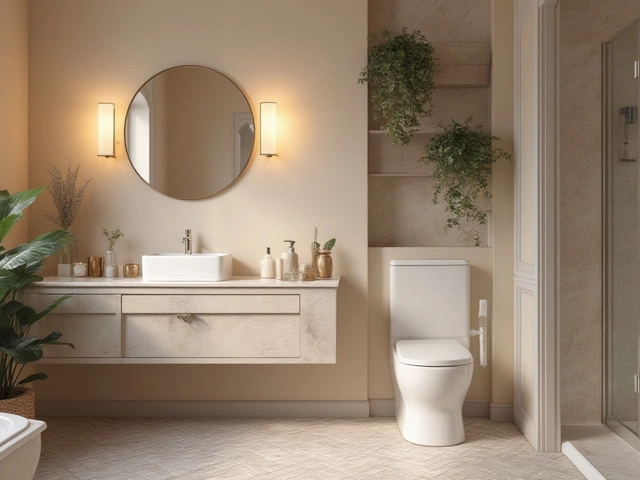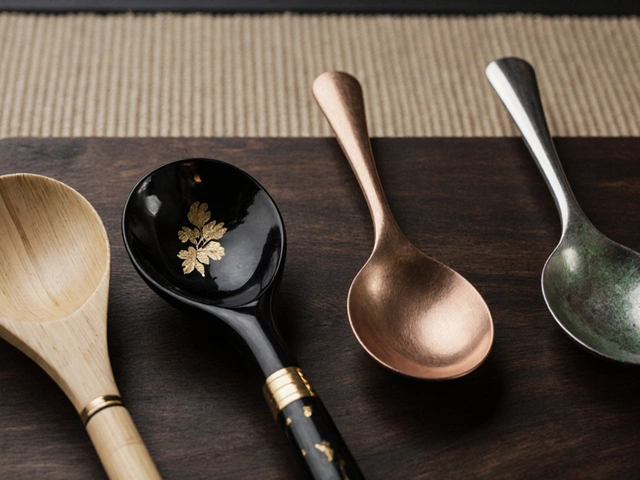Ever wondered why your kitchen drawers are stuffed with all sorts of odd-shaped items, yet every single one has a special job? That’s where the magic of cooking utensils comes in—they’re the unsung heroes making meals possible. Long before anyone even thought about owning an air fryer, people were figuring out clever ways to flip a fish or scoop a stew. But what do you actually call the collection of spatulas, ladles, whisks, and beyond? Here’s where things get surprisingly interesting: there’s a broad, tidy term that wraps up these indispensable items under one neat umbrella.
Kitchenware: The Root of All Cooking Utensils
When people chat about kitchen gear, terms like cooking utensils, kitchen tools, and kitchenware nearly always pop up. But there are subtle differences. The real catch-all phrase is "kitchenware"—this includes everything from tiny measuring spoons to big roasting pans. But if you like specifics, "cooking utensils" focuses more on handheld tools designed for prepping or cooking food.
The word “utensil” itself has roots in Latin—"utensilis" means ‘useful.’ Not exactly a shocker, right? Nowadays, the term has stretched to cover spatulas, spoons, tongs, peelers, and more. If you can grip it in your hand and it helps with prepping, stirring, serving, or turning food, it fits the bill. Even a potato masher or a garlic press gets a seat at this table.
Fun fact: A Smithsonian study found over 300 different types of cooking utensils collected from US homes dating back to the early 1900s—clearly, kitchens are lifelong museums of clever inventions. If you’ve ever seen a Victorian-era grape scissors or a modern spiralizer, you know the category keeps growing. It’s no accident that the modern kitchen toolbox just keeps expanding. We’re a creative bunch!
The reason things get tricky? Because sometimes we use “cookware”—think pans, pots, baking sheets. These are also in the broad kitchenware category, but they’re not utensils. So: essentials for holding or cooking food = cookware. Handheld objects for working with food = cooking utensils. In some stores and online shops, you’ll see “kitchen gadgets” as another fun subcategory. That’s often where you’ll find those pineapple corers, avocado slicers, and tools for jobs you didn’t even know existed until TikTok told you about them.
What’s Actually a Cooking Utensil? Breaking It Down
If you dumped out the drawer marked “utensils” in your kitchen right now, what would you find? Think spoons—lots of spoons! But not just any spoons: wooden, slotted, soup, ladle, serving. Then you have spatulas for flipping, scraping, spreading, or stirring. Tongs are another staple, perfect for tossing salads or grabbing stuff out of boiling pots. And don’t forget whisks for blending and beating anything runny, from eggs to pancake batter.
Knives may seem a category of their own, but they’re considered utensils too. The chef’s knife, paring knife, bread knife—they all fall under the utensil umbrella. Peelers, graters, zesters, can openers, even rolling pins, are included too. Some kitchens get wild with egg slicers, pizza wheels, or crinkle cutters. It all comes down to how you use the tool: if it’s human-powered and its job is prepping or serving food, it counts.
Did you know professional chefs can get attached to certain utensils like home cooks get attached to their favorite mugs? Julia Child famously carried her own set of spatulas, and Anthony Bourdain once declared, “You only need one good knife.” But be honest, most of us have three or four knives, and probably still reach for the same battered wooden spoon every night.
If you’re stocking a kitchen for the first time (or just fed up with cheap plastic stuff melting on your hot pan), here’s a quick guide. Every kitchen benefits from these basics:
- A wooden spoon (won’t scratch pans; won’t melt; lasts forever).
- A sturdy spatula (ideally one heat-resistant for frying, one flexible for flipping delicate foods).
- Metal tongs (for everything from flipping chicken to serving salad).
- A balloon whisk (not just for eggs—great for smoothing out gravy or mixing batter).
- A sharp chef’s knife, plus a small paring knife.
- A ladle for soup and stew.
- A box grater for cheese, veggies, and zest.
- Measuring spoons and cups.
Those are the real MVPs—anything beyond this becomes about how adventurous your cooking gets. Sushi mat? Not needed if you hate sushi (or rolling things). Garlic press? Some swear by them, others use a knife.
This brings us to an odd but helpful habit: reorganizing your utensils every few months. Things get lost in that catch-all drawer, and you might rediscover a ginger grater you forgot (or realize you don’t actually need it at all). A minimalist approach can help: count how many times you used each item in the last year and donate extras collecting dust. Your future self, robbed of clutter and endless drawer-rattling, will thank you.

Unusual Cooking Utensils and Why We Love (or Ignore) Them
Not all utensils are created equal—some become essential, while others join the ranks of kitchen oddities. Ever seen a cherry pitter or an asparagus peeler? Some households might call the banana slicer or avocado cuber indispensable. For others, they’re just novelty gifts collecting dust in the corner.
Global cuisines bring in their own stars. The Japanese donabe spoon mixes rice in clay pots. Scandinavians rely on the lefse stick for thin potato pancakes. Even the humble spurtle, a wooden Scottish stirrer for porridge, has its die-hard fans—Gordon Ramsay included. These single-use or region-specific utensils wind up fascinating food historians, and sometimes, home cooks get obsessed with finding the perfect specialized tool for their favorite recipe.
But trends change. The garlic press, once seen as essential by 90s food magazines, fell out of favor because some chefs say it bruises garlic, making it taste bitter. Still, tons of home cooks never make pasta sauce without one. The spiralizer was all the rage a few years ago for turning zucchini into "zoodles"—these days, it’s debated whether it’s a must-have or a passing phase.
There’s something kind of wonderful about how the popularity of kitchen gadgets rises and falls. One survey by the International Housewares Association in 2023 found that 85% of US kitchens own at least one utensil that hasn’t been used in over a year. So don’t feel guilty about that apple corer you used once. When you do finally dust it off for a pie, it’ll feel like discovering a long-lost treasure.
And hey, some utensils are almost too pretty to use. Hand-carved wooden spoons are a booming craft on Etsy, and people actually collect vintage egg beaters or rare dessert forks. For some, kitchen utensils stop being just tools—they're memories from family dinners or souvenirs from far-off places.
If you’re tempted to try something quirky, start with something practical, like a fish spatula (great for flipping delicate foods), or a dough scraper (doubles as a bench scraper for cleaning up after baking). Some people swear these become new favorites. The trick is to give everything a fair trial. If it makes cooking faster, easier, or more enjoyable, keep it. If not, donate it so someone else can get a kick out of it.
Choosing, Maintaining, and Organizing Cooking Utensils
Picking the right kitchen utensils isn’t just about grabbing whatever’s cheapest on the store shelf. You want things that feel good in your hand, last for years, and make food prep quick and safe. Start with material—wood, metal, silicone, or plastic all have their place. Wooden tools, for instance, don’t scratch non-stick pans and add rustic vibes, but they do need drying out to avoid mold. Stainless steel is super sturdy but can get hot, and plastic might melt if you’re not careful. Silicone is trendy for spatulas and spoons because it doesn’t scratch or melt, so it’s a safe, multipurpose bet for most kitchens.
Look for handles that are comfortable and grippy, especially if you do a lot of stirring or chopping. A handle that gets slippery or too hot to touch can turn a quick dinner into a real headache. If you’re into sustainable living, bamboo utensils get bonus points—they break down nicely after years of use and don’t soak up stains as much as traditional wood.
Utensil maintenance is oddly satisfying. Wash wooden spoons by hand with gentle soap, rinse really well, and let them dry standing up to stop bacteria. Every once in a while, treat them to a coat of mineral oil, which stops them from splitting. Metal and silicone can usually go in the dishwasher, though double-check if they have wooden handles (split risk again!).
Ever find yourself frantically searching for the can opener? Then you know why organizing matters. Drawer organizers are a game-changer, with spots for everything from knives to garlic presses. Stick on a tiny label, or just do a "spring cleaning" once in a while. Some folks swear by hanging racks on the wall or over the stove, which keeps essentials in easy reach and looks pretty stylish too. Marie Kondo, the organization queen, once said,
“The objective of cleaning is not just to clean, but to feel happiness living within that environment.”Messy drawers make for stressful cooking—her words ring true in any busy kitchen.
If you share a kitchen with roommates or a big family, consider color-coding utensils, or at least getting everyone on board with the same storage system. That way, no one’s stuck hunting for the one good whisk during the dinner rush. And for families with little ones, special kid-sized utensils with blunt edges (and maybe fun colors) make “helping” in the kitchen a lot more fun and a lot less hazardous.
If you’re tight on space, invest in multipurpose tools, like a slotted spoon that also works as a skimmer, or measuring cups that stack together. There are clever nesting utensil sets, too—they look like a matryoshka doll and save major drawer space. Wall hooks for essentials, or even a magnetic strip for kitchen knives, keep things handy without overcrowding.
Polish your skills by occasionally checking out a pro chef’s starter kit list online—most actually suggest fewer tools than people expect. Once you find what works for you, meals get faster, prep feels less of a chore, and your kitchen feels like it actually fits your life.
So next time you pick up that well-worn spatula or the oddly shaped cheese plane, know it’s part of a huge, ever-evolving family known as cooking utensils. From ancient spoons carved out of bone to the latest gadget trending on social, the tools you choose say a lot about how you live (and eat) right now. That’s the real fun in a kitchen drawer full of possibilities.







